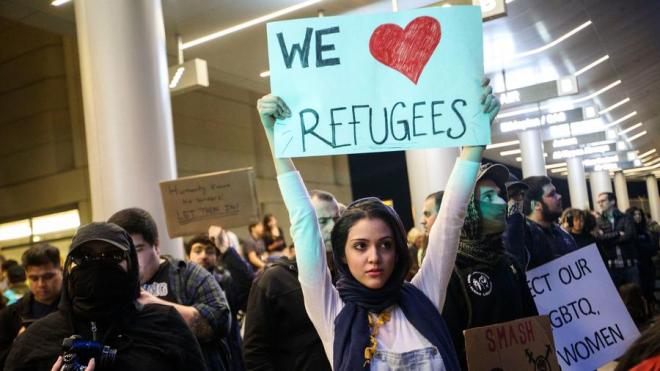
Saturday June 24, 2017

The number of refugees admitted to the United States was cut by nearly half in the first three months of the Trump administration compared with the final three months of the Obama presidency, reflecting the new president's skepticism toward immigration.
Government statistics released Friday showed that more than 25,000 refugees were permitted to enter and reside in the United States at the end of the Obama administration. In the initial months under President Trump, the number fell to 13,000.
The statistics were released by the Department of Homeland Security, based on information supplied by the State Department.
Countries of origin were largely unchanged. In both periods, two-thirds of the arrivals came from five countries: the Democratic Republic of the Congo, Syria, Iraq, Somalia and Myanmar.
Refugees from two of those countries — Syria and Somalia — would have been banned under Trump's executive order against entries from certain Muslim-majority nations, but federal courts have blocked the order. Trump's original order covered Iraqis as well, but he omitted Iraq from his revised order.
The data suggest that the Obama administration, as it was about to turn over power to Trump, significantly stepped up the number of refugees admitted. Arrivals in its final three months reflected an 86% year-over-year increase compared to the same period the previous year.
In Trump's first three months, arrivals were 12% lower than for the same period in the previous year.
Trump has sought to limit the number of refugees to 50,000 this year. But adverse rulings in the courts could work against him.
The United States already has one of the lowest quotas of refugee admissions among major receiving countries. Nations closer to conflict zones such as Syria have taken in millions of refugees.
More people have been displaced from their home nations, because of violence and poverty, than at any time since World War II.